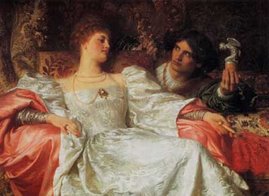Like many of my students, fellow writers, and other creative souls, I've been wondering about the impact of AI on the writing profession. After reading about how the Writers Guild of America labor union is striking for better terms with the Alliance of Motion Picture and Television Producers, I realized one of the main sticking points is the role of AI in the writing and production process.
After digesting all this information, I decided to go down the rabbit hole today and create an account with one of the numerous AI generators out there. I tried the free version first and registered. The program spit out the first page of The Da Vinci Code--but without crediting Dan Brown. Luckily for me, I recognized who Robert Langdon was but wonder if other users would know.
I then tried ChatGPT, but the free version only. I asked it to write the first page of a historical romance novel, and this is what it produced:
"Lady Elizabeth of Ashbourne gazed out the window of her bedchamber, her mind wandering to the handsome stranger she had met earlier that day. His piercing blue eyes and chiseled jaw had left her breathless, and she found herself unable to shake the memory of his warm, calloused hand as he had taken hers in greeting. But she knew that such thoughts were foolish; as the daughter of a prominent earl, she was expected to marry a man of wealth and status, not some rugged traveler passing through town. Yet despite herself, she couldn't help but dream of a life filled with adventure and passion, with the mysterious stranger by her side."
The prose doesn't exactly sparkle, does it? Perhaps future version will provide text that sounds a bit more human and less like someone copied text from a manual on how to write a romance novel, but for now, I think we're safe from AI dominated the field. In the meantime, back to writing!










.jpg)






